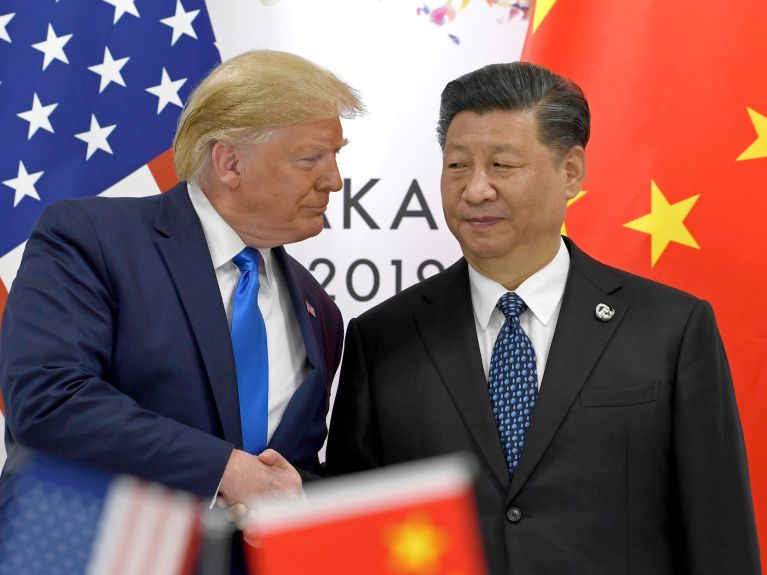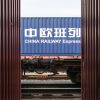My dearest enemy: Donald Trump and Xi Jinping
The specter of a new Cold War between the US and China is lurking.

Trade wars are good and easy to win, US President Donald Trump boasted in one of his toxic tweets. He confirmed his message last month: “We will soon be winning big on Trade and everyone knows that, including China!”
Yet in reality, the grand deal with the People’s Republic, which has been Trump’s target for more than two years, has turned out to be ever-more elusive. The tariff dispute has tipped over into a full-blown trade war, a currency war and an incipient Cold War between the incumbent superpower United States and the rising superpower China.
Huge US trade deficit with China
Their rivalry may well dominate global geopolitics in the next three decades. In his first foreign policy speech, back in 2016, presidential candidate Trump bragged: “We have the leverage. We have the power over China, economic power, and people don’t understand it. And with that economic power we can rein [them]in and we can get them to do what they have to do.” Reducing the huge US trade deficit with China – which actually grew from $375 billion in 2017 to $440 billion in 2018 – was his main concern. To bring it down, he thought – vainly, as it turned out – imposing punitive tariffs was the most efficient lever.
More and more punitive tariffs for China
A barrage of tariff increases has become the hallmark of his administration. He started in January 2018 by raising levies on washing machines and solar panels. In March, he slapped 25 percent on steel and 10 percent on aluminum. In July, a 25-percent tariff was imposed on Chinese import goods worth $50 billion; in September, the US announced a 10-percent tariff on $200 billion worth of goods, increasing to 25 percent at the end of the year.
Trump tweeted: China is letting us down
This hike was postponed temporarily to give the negotiators a chance to reach agreement but put into effect in May 2019, with Washington claiming that China had reneged on deals already agreed upon. In July, Trump tweeted that “China is letting us down in that they have not been buying the agricultural products from our great Farmers that they said they would.” In August, he announced on Twitter that an additional 10-percent tariff would be levied on the “remaining $300 billion of goods.”
Retaliatory tariffs on US imports
Some of them were postponed in order to avoid harming American Christmas shoppers, but about half were imposed on Sept. 1. Beginning on Oct. 15, tariffs on $250 billion worth of Chinese goods will be ratcheted up from 25 to 30 percent, and from 10 percent to 15 percent on the remaining $300 billion by Dec. 1. As Beijing has imposed retaliatory tariffs on US imports each time and 12 rounds of negotiations have not brought a solution any closer, China and the US are now embroiled in a full-fledged trade war. Neither Trump nor Xi Jinping is showing signs of backing down.
Trump called Xi Jinping an “enemy”
Trump is still tilting more toward escalation than accommodation. Last month he had China designated a “currency manipulator.” One Friday in August, he called Xi Jinping an “enemy,” and the following Monday praised him again as a “great leader” and a “tough guy.” He regretted that he had not raised tariffs even higher. (“Our country has been losing HUNDREDS OF BILLIONS OF DOLLARS a year to China, with no end in sight.”) Defiantly, Trump told reporters: “If they don’t want to trade with us anymore that would be fine with me.”
Ban on Huawei products
He is confident of winning the trade hostilities. And not only did he order Amazon, FedEx, UPS and the US Postal Service to “search for and refuse” deliveries of fentanyl, a murderous opioid pain killer that caused the death of 30,000 Americans last year, his administration also banned the import of Huawei products (worth $11 billion in 2018). The ban will enter into force after a few months.
The Chinese economy is less than feared
But China’s strongman Xi Jinping is not buckling. The damage done so far to the Chinese economy is less than feared; the country’s exports are up and the weakened yuan is cushioning the effect of the tariff increase. Beijing’s line remains unchanged: US tariff hikes will be answered by Chinese retaliatory raises. Quoting President Xi, the People’s Daily underscored: “China’s will to defend the core interest of the country and the fundamental interest of the people is indestructible.” It will “fight to the end.”
Punitive tarrifs will hit Trump farming voters hard
Obviously, the regime expects Trump, who is gearing up for next year’s presidential election, to run increasingly into domestic resistance once the heightened tariffs kick in and China’s refusal to buy US corn, pork, beef and soybeans will hit his farming voters in the Midwest particularly hard. If push comes to shove, a ban on the export of rare earths to the US or an accelerated drawing down of China’s $1.1 trillion US treasury holdings could dramatically boost the impact of China’s reprisals.
Reason for enmity not only the trade
Just a few weeks before the 70th anniversary of the PRC’s founding on Oct. 1 and only two years before the Chinese Communist Party celebrates its 100th birthday, Xi Jinping cannot show any sign of weakness. The nationalism he has fueled will stiffen his resolve not to bend to Trump’s quixotic policy. Negotiations are scheduled to resume in October. But even if a mini-deal could be achieved, with China pledging to buy more American farm products and the US lifting its ban on Huawei, the fundamental confrontation between the antagonists would persist for the simple reason that the trade hostilities are not only about trade.
Read the whole text on The German Times website
Theo Sommer is the executive editor of The German Times.

